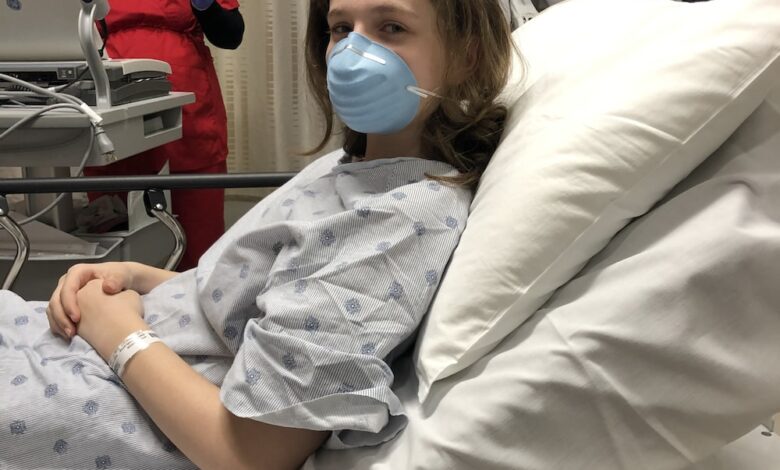Anesthesia: Safeguarding Comfort and Safety during Medical Interventions
Anesthesia: Safeguarding Comfort and Safety during Medical Interventions

Welcome to the world of anesthesia, where comfort and safety take center stage during medical interventions. In this fast-paced and ever-evolving field, skilled professionals work tirelessly to ensure patients undergo procedures with minimal discomfort and maximum peace of mind. With its primary goal of inducing a pain-free state, anesthesia has revolutionized the world of medicine, allowing surgeons to perform intricate procedures and patients to have a more comfortable experience. From general anesthesia, which renders patients unconscious, to regional and local anesthesia, which numb specific areas, the options are vast and tailored to each individual’s needs. But it’s not just about the administration of drugs; anesthesia also involves close monitoring of vital signs and continuous adjustment to maintain the desired level of sedation. Join us as we delve into the fascinating world of anesthesia, exploring its various techniques, advancements, and the dedicated professionals who make it all possible. Get ready to discover how anesthesia safeguards comfort and safety, making medical interventions a smoother and less daunting experience for all.
The importance of anesthesia in medical interventions
Medical interventions, whether they involve surgery, diagnostic procedures, or pain management, can be daunting and anxiety-inducing for patients. This is where anesthesia plays a vital role. By inducing a pain-free state and ensuring the patient remains comfortable throughout the procedure, anesthesia not only safeguards the well-being of the individual but also allows healthcare professionals to perform their tasks with precision and efficiency.
Anesthesia serves as a critical tool in modern medicine, enabling complex surgeries that were once considered impossible. It allows surgeons to focus on their work without the distraction of a conscious and potentially frightened patient. Furthermore, anesthesia helps reduce post-operative pain and stress, promoting faster recovery and improving overall patient outcomes.
Types of anesthesia – general, regional, and local
Anesthesia comes in different forms, each tailored to the specific needs of the patient and the procedure at hand. The three main types are general anesthesia, regional anesthesia, and local anesthesia.
General anesthesia is the most commonly known type of anesthesia. It involves the administration of drugs that render the patient unconscious and unresponsive. During general anesthesia, the anesthesiologist closely monitors the patient’s vital signs, ensuring their safety and adjusting the level of sedation as needed. This type of anesthesia is typically used for major surgeries or procedures that require complete unconsciousness.
Regional anesthesia involves numbing a specific region of the body, such as an arm or a leg, without affecting the patient’s consciousness. This can be achieved through nerve blocks, epidurals, or spinal anesthesia. Regional anesthesia provides effective pain relief and allows patients to remain awake and aware during the procedure. It is commonly used for surgeries involving the extremities, as well as for childbirth.
Local anesthesia, on the other hand, is used for minor procedures and involves the numbing of a small area, such as a specific spot on the skin. This can be achieved through the direct application of anesthetic agents or through the use of topical creams or sprays. Local anesthesia eliminates pain and discomfort in the targeted area and is commonly used for procedures like dental work or minor skin surgeries.
Preparing for anesthesia – what to expect and how to prepare
Before undergoing anesthesia, patients are typically required to undergo a thorough pre-operative evaluation. This evaluation includes a review of the patient’s medical history, a physical examination, and any necessary laboratory tests. The purpose of this evaluation is to identify any potential risks or complications that may arise during anesthesia and to tailor the anesthetic plan accordingly.
In preparation for anesthesia, patients are often instructed to abstain from eating or drinking for a certain period of time prior to the procedure. This is to reduce the risk of aspiration, which occurs when stomach contents enter the lungs during anesthesia. Following these fasting guidelines is crucial for patient safety and can help prevent complications during the procedure.
Additionally, patients may be advised to stop taking certain medications or supplements in the days leading up to the procedure. Some medications can interfere with the effects of anesthesia or increase the risk of bleeding. It is important for patients to disclose all medications they are taking, including over-the-counter drugs and herbal supplements, to their healthcare provider prior to the procedure.
Administering anesthesia – the process and considerations
The administration of anesthesia is a complex and carefully orchestrated process that requires the expertise of an anesthesiologist or a certified registered nurse anesthetist (CRNA). These healthcare professionals undergo extensive training to ensure the safe and effective delivery of anesthesia.
The process typically begins with the placement of an intravenous (IV) line, which allows for the delivery of medications and fluids throughout the procedure. The anesthesiologist or CRNA then closely monitors the patient’s vital signs, including blood pressure, heart rate, and oxygen levels, throughout the procedure. This constant monitoring helps ensure the patient’s safety and allows for immediate intervention if any complications arise.
The administration of anesthesia involves the use of various medications, including anesthetics, analgesics, and muscle relaxants. The type and dosage of these medications are carefully selected based on the individual patient’s needs, the type of procedure being performed, and any pre-existing medical conditions. The goal is to achieve the desired level of sedation and pain relief while minimizing the risk of side effects or complications.
During the procedure, the anesthesiologist or CRNA continuously adjusts the level of anesthesia to maintain the desired level of sedation. This may involve increasing or decreasing the dosage of medications, or using additional techniques, such as regional anesthesia, to target specific areas of the body. The goal is to ensure the patient remains comfortable and pain-free throughout the procedure, while also maintaining their safety and well-being.
Potential risks and complications of anesthesia
While anesthesia is generally safe, there are potential risks and complications associated with its administration. These risks can vary depending on factors such as the patient’s overall health, the type of procedure being performed, and the specific medications used.
Common risks and complications of anesthesia include allergic reactions to medications, respiratory problems, and adverse reactions to anesthesia itself. In rare cases, anesthesia can also cause complications such as nerve damage, infections, or post-operative cognitive dysfunction.
To mitigate these risks, the anesthesiologist or CRNA carefully assesses each patient’s individual risk factors and tailors the anesthetic plan accordingly. They also closely monitor the patient’s vital signs throughout the procedure and are prepared to intervene promptly if any complications arise.
Advances in anesthesia technology and techniques
The field of anesthesia has witnessed significant advancements in recent years, thanks to ongoing research and technological innovation. These advancements have led to improved patient outcomes, enhanced safety, and greater precision in the delivery of anesthesia.
One notable advancement is the use of ultrasound technology to guide nerve blocks and regional anesthesia procedures. By providing real-time imaging of the target area, ultrasound allows for more accurate needle placement and increased success rates. This technology has revolutionized regional anesthesia, making it safer and more effective.
Another area of advancement is the development of new anesthetic drugs and techniques. These innovations have resulted in medications with fewer side effects and faster recovery times. For example, the use of total intravenous anesthesia (TIVA) has gained popularity due to its ability to provide a smoother recovery and reduce post-operative nausea and vomiting.
Furthermore, advancements in monitoring technology have improved patient safety during anesthesia. The use of capnography, which measures the carbon dioxide levels in a patient’s breath, allows for early detection of respiratory problems and can help prevent complications such as hypoxia or hypercapnia.
Conclusion – the vital role of anesthesia in modern healthcare
Anesthesia plays a vital role in modern healthcare, ensuring comfort and safety during medical interventions. From major surgeries to minor procedures, anesthesia allows patients to undergo treatments with minimal discomfort and anxiety. It enables healthcare professionals to perform their tasks with precision and efficiency, ultimately improving patient outcomes.



